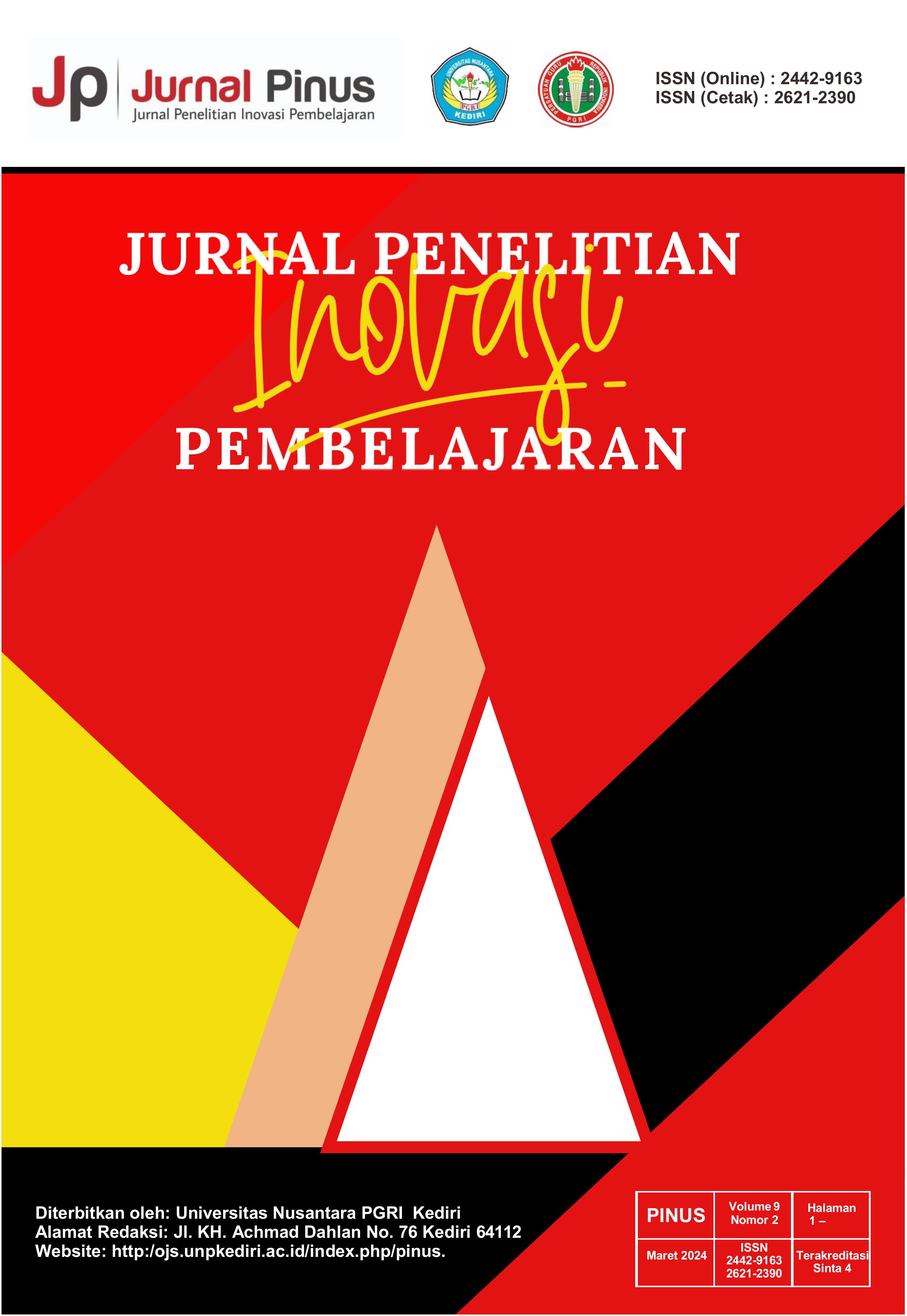Spices in the Warunggahan Inscription as a Reference for Traditional Medicine
DOI:
https://doi.org/10.29407/pn.v9i2.20961Keywords:
Warunggahan Inscription, Spices, Traditional Medicine, ReasonAbstract
The background to this research is based on the results of researchers' observations which show that people now tend to choose traditional medicine in the treatment process. This phenomenon is reflected in the increasing number of consumers who buy traditional medicines, both those that are registered and those that have obtained a business license. The aim of this research is to find out what spices are contained in the Warunggahan inscription, the reasons why spices are written in the Warunggahan inscription, and the characteristics of the plants/spices in the Waunggahan inscription. In this research, researchers used a qualitative descriptive approach method. Qualitative research is research in which the discussion brings up data obtained in the field. The research was carried out in several research stages, the first was the pre-research stage in the first week of December, research implementation in January-April, data analysis in May and June, and reporting of research results in July. At the research stage, researchers conducted direct interviews, including with Novi B.M.W, Wahyu Alam and A.B Aji Setiaji. The conclusions of this research are (1) The spices contained in the Warunggahan inscription include bsar, kasumba, wunkudu, jodhi, keteke, wuyah, kamal, lena, lurunan, kletik and gula. (2) The reason for writing spices in the Warunggahan inscription is to limit the sale of goods by carrying them. (3) The plants or spices contained in the Warunggahan Inscription have the following characteristics. The leaves are serrated, thorny and non-serrated, the stems are sturdy and break easily, have fruit and a distinctive taste, can grow up to 30m, the leaves are shiny green to dark green, the fruit is hard and soft when ripe.
Downloads
References
Alkari, A., Ferdian, F., & Wiratama, N. S. (2021, December). Nilai-Nilai Pendidikan Karakter Dalam Relief Bubuksah-Gagangaking Di Candi Surowono. In Prosiding SEMDIKJAR (Seminar Nasional Pendidikan Dan Pembelajaran) (Vol. 4, Pp. 253-260).
Agustin, A., Wiratama, N. S., & Yatmin, Y. (2022, July). Dampak Pembangunan Bendung Gerak Waru Turi Terhadap Sosial-Ekonomi Masyarakat Desa Gampeng Kecamatan Gampengrejo Kabupaten Kediri Tahun 1988-2019. In Prosiding SEMDIKJAR (Seminar Nasional Pendidikan Dan Pembelajaran) (Vol. 5, Pp. 454-462).
Army, R. (2018). Jamu Ramuan Tradisional Kaya Manfaat. Badan Pengembangan dan Pembinaan Bahasa. Rawamangun Jakarta Timur
Edi, F. R. S. (2016). teori wawancara Psikodignostik. Penerbit LeutikaPrio. Yogyakarta
Enda, T. N., Listanti, Y., Sukma, M., & Wiratama, N. S. (2022). Kajian Proses Islamisasi Di Nusantara (Studi Analisis Masjid Al–Mubarok Di Desa Kacangan Kecamatan Berbek, Kabupaten Nganjuk). JEJAK: Jurnal Pendidikan Sejarah & Sejarah, 2(1), 69-75.
Gagas Ulung; Intarina Hardiman; Pusat Studi Biofarmaka. (2014.). Sehat Alami Dengan Herbal : 250 Tanaman Berkhasiat Obat + 60 Resep Makanan & Minuman Sehat / Oleh Pusat Studi Biofarmaka LPPM IPB & Gagas Ulung ; Editor, Intarina Hardiman. Jakarta : Gramedia Pustaka Utama,.
Hariyadi, A. H., Widiatmoko, S., & Wiratama, N. S. (2022, July). Studi Tentang Peran Dan Fungsi Museum Anjuk Ladang Di Kabupaten Nganjuk Tahun 2018-2022. In Prosiding SEMDIKJAR (Seminar Nasional Pendidikan Dan Pembelajaran) (Vol. 5, Pp. 463-471).
Hakim, L. (2015). Rempah Dan Herba Kebun-Pekarangan Rumah Masyarakat: Keragaman Sumber Fitofarmaka Dan Wisata Kesehatan-Kebugaran. Yogyakarta: Diandra Creative.
Hasanah, Y. (2011). Budidaya Tanaman Obat Dan Rempah: USU Press. Medan Indonesia
Hatta Sunanto, 1945-. (1993). Budidaya Pala : Komoditas Ekspor / Hatta Sunanto. Yogyakarta : Kanisius.
Munib, N. B. (2023). JELAJAH WISATA REMPAH Bunga Rampai Cerita Rempah. Kediri: Pelestari Sejarah-Budaya Kadhiri (PASAK).
Ningsih, D. Q. W. (2021). Etnobotani Tumbuhan Rempah-Rempah Oleh Masyarakat Kabupaten Ponorogo Provinsi Jawa Timur (Doctoral Dissertation, Universitas Islam Negeri Maulana Malik Ibrahim).
Nursiyah, N. (2013). Studi Deskriptif Tanaman Obat Tradisional yang Digunakan Orang Tua untuk Kesehatan Anak Usia Dini di Gugus Melati Kecamatan Kalikajar Kabupaten Wonosobo. Semarang: UNNES.
Sambodo, G. A. (2018). Prasasti Waruṅgahan Sebuah Data Baru Dari Masa Awal Majapahit. Amerta, 36(1), 23-36.
Tiarawanti, R., Yatmin, Y., & Widiatmoko, S. (2022). Makna Dan Nilai-Nilai Simbolik Relief Sudamala Pada Candi Tegowangi Tahun 2022 (Doctoral Dissertation, Universitas Nusantara PGRI Kediri).
Widiatmoko, S., Lestari, S. N., & Wiratama, N. S. (2020). Peningkatan Keaktifan Mahasiswa Pendidikan Sejarah Dalam Mata Kuliah Studi Observasi Melalui Kegiatan Lesson Study. Jurnal Penelitian Pendidikan Sosial Humaniora, 5(1), 08-13.
Wiratama, N. S. (2021). Kemampuan Public Speaking Dalam Pembelajaran Sejarah. ISTORIA Jurnal Pendidikan Dan Ilmu Sejarah, 17(1). Yogyakarta
Yana, T., Malik, A., & Kurniawan, F. (2018). Study Jenis Rempah–Rempah Dan Pemanfaatannya Di Pasar Tradisional Angso Duo (Doctoral Dissertation, UIN SULTHAN THAHA SAIFUDDIN JAMBI).
Yatmin & Afandi, Z. (2022). Studi Tentang Candi Ngetos Di Kabupaten Nganjuk Ditinjau Dari Kajian Ikonografi. Efektor, 9(1), 66-75.
Zuhri, M. S., Budiono, H., & Afandi, Z. (2022, August). Sejarah Pura Penataran Agung Kilisuci Sebagai Identitas Umat Hindu Di Kota Kediri. In Prosiding SEMDIKJAR (Seminar Nasional Pendidikan Dan Pembelajaran) (Vol. 5, Pp. 848-855).
Downloads
Published
Issue
Section
License
Authors who publish with this journal agree to the following terms:
- Copyright on any article is retained by the author(s).
- The author grants the journal, right of first publication with the work simultaneously licensed under a Creative Commons Attribution License that allows others to share the work with an acknowledgment of the work’s authorship and initial publication in this journal.
- Authors are able to enter into separate, additional contractual arrangements for the non-exclusive distribution of the journal’s published version of the work (e.g., post it to an institutional repository or publish it in a book), with an acknowledgment of its initial publication in this journal.
- Authors are permitted and encouraged to post their work online (e.g., in institutional repositories or on their website) prior to and during the submission process, as it can lead to productive exchanges, as well as earlier and greater citation of published work.
- The article and any associated published material is distributed under the Creative Commons Attribution-ShareAlike 4.0 International License









